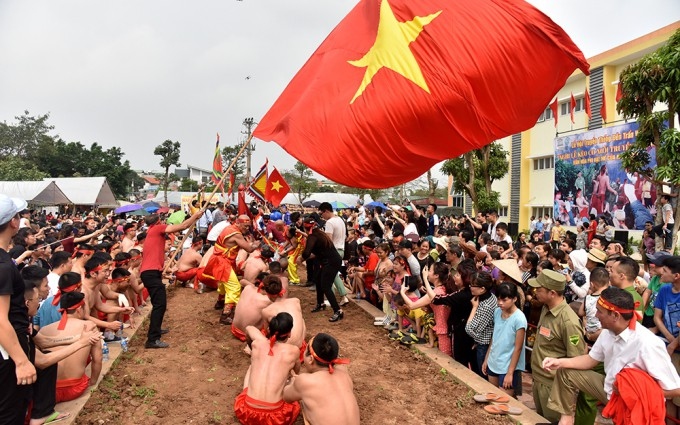Initiatives to promote tug-of-war in Vietnam
VOV.VN - Tug-of-war rituals and folk games were honored by UNESCO in 2015 as an intangible cultural heritage of humanity, a multi-national project of Vietnam, the Republic of Korea, Cambodia, and the Philippines.

In Vietnam, tug-of-war is played differently in different localities, reflecting local history, lifestyle, and culture. In many variants of the game, players pull a strong bamboo pillar, or knotted bamboo cords, while either standing or sitting. The game honors the spirit of sportsmanship and prays for a new year with favorable weather, but each locality has its own version.
To preserve and promote the heritage, the Cultural Heritage Association of Vietnam (CHAV), in collaboration with the Hanoi Department of Culture and Information, recently hosted a seminar where tug-of-war communities discussed their traditions. This community discussion coincided with the 5-year celebration of tug-of-war being honored by UNESCO.
According to CHAV Chairman Do Van Tru, heritage preservation should be done by the community, relying on community awareness and brainpower.
“Tug-of-war practitioners come here today at their own expense. Without this seminar, they wouldn’t even know each other, much less work together to preserve these rituals and games," said Tru. "This seminar is the first really big step of our preservation efforts.”
Local authorities and residents of Hanoi’s Thach Ban ward, where sitting tug-of-war is practiced at Tran Vu temple every year, have paid more attention to the game since it was recognized by UNESCO.
Ngo Quang Khai, Head of the Tran Vu Temple Management Board, confided that they have asked the local administration to organize extra-curricular activities to promote sitting tug-of-war.
"This program aims to reach all 62 local primary and secondary schools. Each year, 12,000 pupils visit Tran Vu temple, where we introduce them to the folk game through photos, drawings, and documentaries. They also watch us demonstrate tug-of-war. We already have permission to build a tug-of-war exhibition house in 2021,” said Khai.
This exhibition house is modeled on the Republic of Korea’s three-storey tug-of-war museum that a Vietnamese delegation witnessed during an exchange program in 2019.
In 2018, a tug-of-war delegation from the Republic of Korea visited Vietnam and demonstrated the game at the Hanoi Museum, the Temple of Literature, and Tran Vu Temple. At their invitation, 30 CHAV players went to the Republic of Korea in 2019 for a tug-of-war festival.
Exchange activities were canceled in 2020 due to the coronavirus pandemic. They only had an online conference hosted by the Republic of Korea to celebrate the 5-year anniversary of UNESCO’s recognition of tug-of-war.
The four honorees – the Republic of Korea, Cambodia, the Philippines, and Vietnam - will take turns organizing online events to promote the game and seek ways to protect the heritage during international integration, Ly elaborated.
At the Hanoi seminar, the heritage communities voted overwhelmingly to establish a Tugging Rituals and Games Network connecting individuals, localities, and organizations who share the passion to keep the game alive.
Its self-funded operation aims to tighten links between tug-of-war players, share information and experience, and organize a monthly or yearly event. The sitting tug-of-war community in Hanoi will host the very first festival in Vietnam in 2021.
